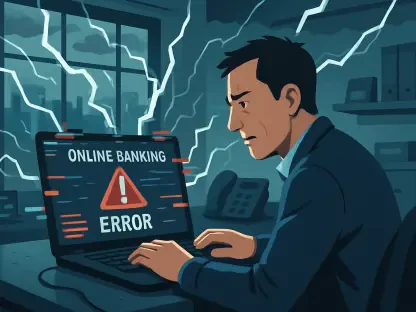I’m thrilled to sit down with Priya Jaiswal, a renowned expert in banking, business, and finance, whose deep knowledge in market analysis, portfolio management, and international business trends offers invaluable insights. Today, we’re diving into the groundbreaking acquisition of Burling Bank by LevelField Financial, a move that positions them as pioneers in blending traditional banking with digital asset services. Our conversation explores the journey of this acquisition, its impact on the industry, future plans for the combined entity, financial strategies, and the regulatory landscape shaping this innovative step forward.
Can you walk us through the journey of LevelField Financial acquiring Burling Bank, and what made this nearly three-year process so significant?
Absolutely, it’s been a remarkable journey for LevelField Financial. They first proposed acquiring Burling Bank back in February 2023, but faced significant hurdles, particularly around the capital requirements set by regulatory bodies. These challenges led to the withdrawal of their initial application. However, by December 2024, they came back stronger with a revised application that addressed those concerns, ultimately securing conditional approval from the Illinois Department of Financial and Professional Regulation. This persistence over almost three years highlights their commitment to integrating digital assets into traditional banking, a vision that could reshape how financial services operate in the U.S.
What were some of the biggest challenges LevelField faced during this acquisition process?
One of the primary challenges was meeting the stringent capital requirements imposed by regulators. When they first applied, they encountered unexpected roadblocks that made it clear they needed more financial backing than anticipated. This forced a strategic retreat to reassess and gather the necessary resources. It wasn’t just about money, though; aligning their innovative vision with regulatory expectations required patience and disciplined planning to ensure consumer and business protections were prioritized, which is a cornerstone of the U.S. banking system.
How does this acquisition position LevelField uniquely in the banking industry, especially with digital assets?
This acquisition is a game-changer because it positions LevelField as the first full-service chartered bank in the U.S. to offer both traditional banking and digital asset services on a single platform. They’re not just dipping their toes into crypto; they’re creating a seamless experience where customers can handle everything from regular deposits to digital asset custody without leaving the bank’s ecosystem. This integration is a bold step toward modernizing banking and meeting the growing demand for cryptocurrency-related services in a regulated, secure environment.
What impact do you foresee this having on customer perceptions and choices in the banking sector?
I think it’s going to shift how customers view their banking options significantly. As digital assets like bitcoin and Ether become more mainstream, people are looking for trusted institutions that can handle both their traditional and crypto needs. LevelField’s approach could build that trust by offering a regulated platform, which might encourage more conservative or hesitant customers to explore digital assets. It could also pressure other banks to innovate, creating a ripple effect across the industry where hybrid services become the norm rather than the exception.
Looking ahead, how will LevelField Bank balance its community banking roots with this new focus on digital assets?
That’s a critical aspect of their strategy. While the combined entity will be renamed LevelField Bank, they’ve made it clear they intend to preserve Burling’s community banking business, which has deep local ties and a loyal customer base. At the same time, they’re introducing deposit accounts, loans, and custody services tailored to digital assets. The balance will likely come from maintaining separate operational focuses while leveraging technology to integrate these services under one roof, ensuring that traditional customers aren’t alienated while attracting a tech-savvy demographic.
What specific digital asset services are you most excited about seeing LevelField introduce, and why?
I’m particularly intrigued by their plans for term loans and credit cards secured by bitcoin or Ether. These offerings are innovative because they bridge a gap between digital wealth and real-world financial needs. Allowing customers to use their crypto holdings as collateral for loans or credit could unlock significant liquidity for individuals who are asset-rich in the digital space but need traditional financing. It’s a practical way to integrate crypto into everyday banking, and I’m eager to see how the market responds to these products.
Can you explain the financial strategy behind the $70 million acquisition price and the additional capital they plan to raise?
Certainly. The $70 million price tag for Burling Bank, which has about $209.5 million in assets and a single branch, reflects a valuation that likely considers both its current financial health and the strategic value it brings to LevelField’s vision. Beyond that, they’re aiming to raise $112.5 million, with portions allocated to cover the acquisition cost, $20 million for growth capital to expand their digital asset offerings, and $17.5 million to be retained by LevelField. This capital infusion is crucial not just for the purchase but for scaling operations and ensuring they have the resources to innovate and compete in a rapidly evolving market.
How do you see LevelField managing the operational expansion, especially with plans to hire around 100 new employees?
Hiring around 100 new employees in 2026, with a strong focus on customer service, shows that LevelField understands the importance of support in a 24/7 digital asset environment. Crypto users often expect round-the-clock assistance due to the nature of global markets, so prioritizing customer service roles is a smart move. Operationally, they’ll likely focus on building a robust training program to ensure these new hires are well-versed in both traditional banking and the nuances of digital assets, creating a seamless experience for customers navigating this hybrid model.
What are your thoughts on the regulatory landscape, particularly with the Federal Reserve’s approval still pending?
The regulatory landscape for something as novel as integrating digital assets into a chartered bank is understandably complex. LevelField has already taken significant steps to meet supervisory standards, as evidenced by the conditional approval from the state regulator and their commitment to consumer protection. The pending Federal Reserve approval is the final hurdle, and while it’s not guaranteed, their disciplined approach and transparency with investors suggest they’re well-prepared to address any concerns. Regulators are cautious, and rightly so, given the risks associated with crypto, but LevelField seems to be navigating this with a collaborative mindset.
What is your forecast for the integration of digital assets into traditional banking over the next decade?
I believe we’re at the cusp of a major transformation. Over the next decade, I expect to see more banks following LevelField’s lead, integrating digital assets as a core part of their offerings, driven by customer demand and competitive pressure. However, the pace will heavily depend on regulatory clarity and advancements in security technology to mitigate risks like fraud and volatility. If done right, this integration could democratize access to digital wealth, making banking more inclusive and innovative. I’m optimistic, but it’s going to require careful collaboration between industry players and regulators to ensure stability and trust.









